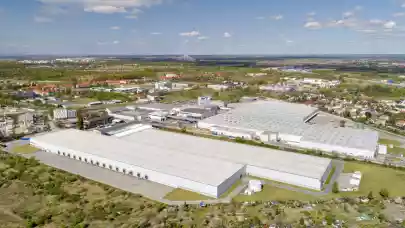
In Q1 2025, the total modern office stock in Poland’s regional markets reached approximately 6.77 million sqm. During this period, new supply was limited, with only one office project completed - Dymka 188 in Poznań, offering 2,400 sqm of space, says Avison Young.
The development pipeline remains modest, with around 80,000 sqm of office space expected to be delivered by the end of the year. Kraków and Poznań continue to lead in development activity among the regional cities.
Demand and vacancy
The total demand for office space in Q1 2025 amounted to around 177,000 sqm. Kraków and Wrocław were responsible for almost 60 % of the total take-up, highlighting their importance as major regional markets. Lease renegotiations played a significant role in the market, accounting for nearly half of the leased space (48%), while new deals represented 40 % of the market.
The overall vacancy rate across the regional office markets was recorded at 17.5 %, representing a slight decrease of 0.3 percentage points both quarter-on-quarter and year-on-year. There is still a significant volume of vacant space - approximately 1.18 million sqm - with the highest vacancy rates observed in Łódź at 22.3% and Katowice at 21.1%.
In terms of office demand, “IT products and services” sector was responsible for 18 % of leased space in Q1 2025, followed by “business service” with 16% and “manufacturing” with 14%.
When broken down by city, Kraków attracted the highest level of interest, accounting for 32% of all demand, followed by Wrocław with 25%, Tricity with 15%, and Katowice with 10%.
Rental rates
Rental rates for prime office buildings varied by location. The most expensive were Kraków and Wrocław, where rates ranged from €13.00 to 18.00 and from €14.00 to 18.00/sqm/month, respectively. Tricity saw rents between €14.00 and 16.50, while in Katowice, the range was €12.50 to 16.00.
What’s next
Looking ahead, the limited supply of new office space may contribute to a decline in vacancy rates in the regional markets.
“While the pipeline remains constrained, higher vacancy levels in existing buildings, compared to the Warsaw market, offer occupiers increased flexibility in lease negotiations. Despite a potential supply gap, the current market environment continues to favour tenants, which makes the perceived shortage of office space less impactful than in Warsaw. However, securing larger, newly built spaces remains a challenge. In terms of demand structure, we anticipate that lease renegotiations will continue to dominate in regional markets”, comments Maksymilian Sobczak, Director, Office Agency.



